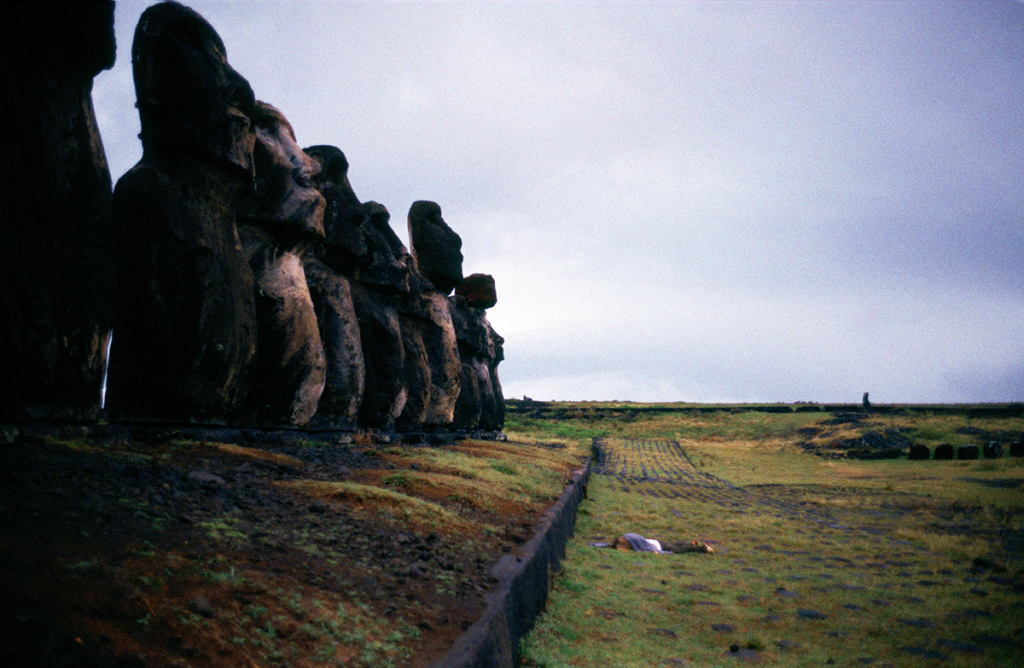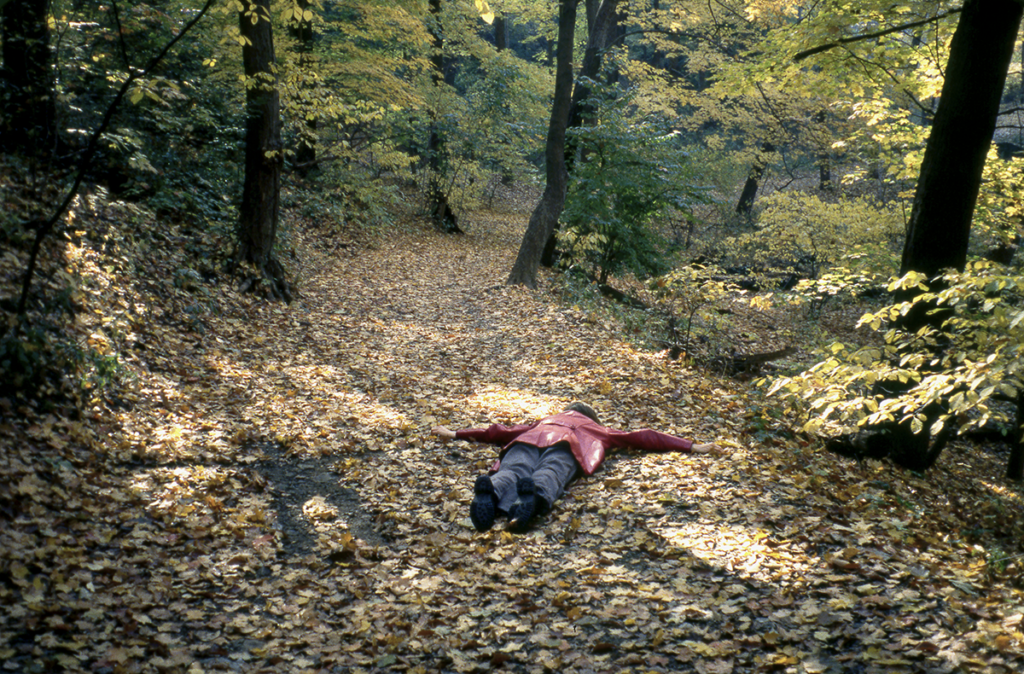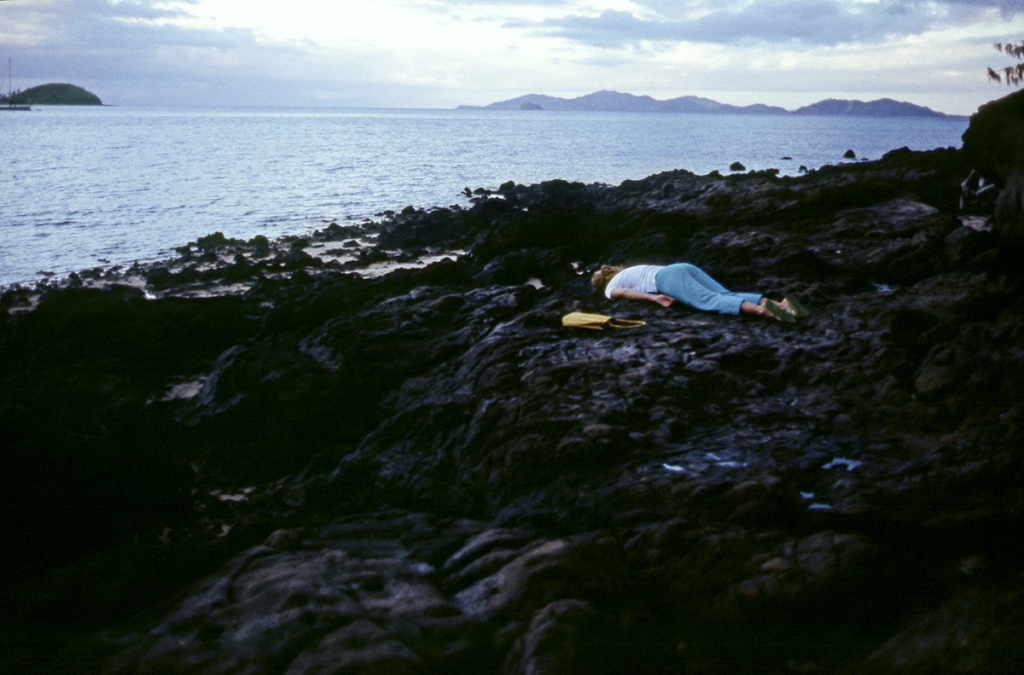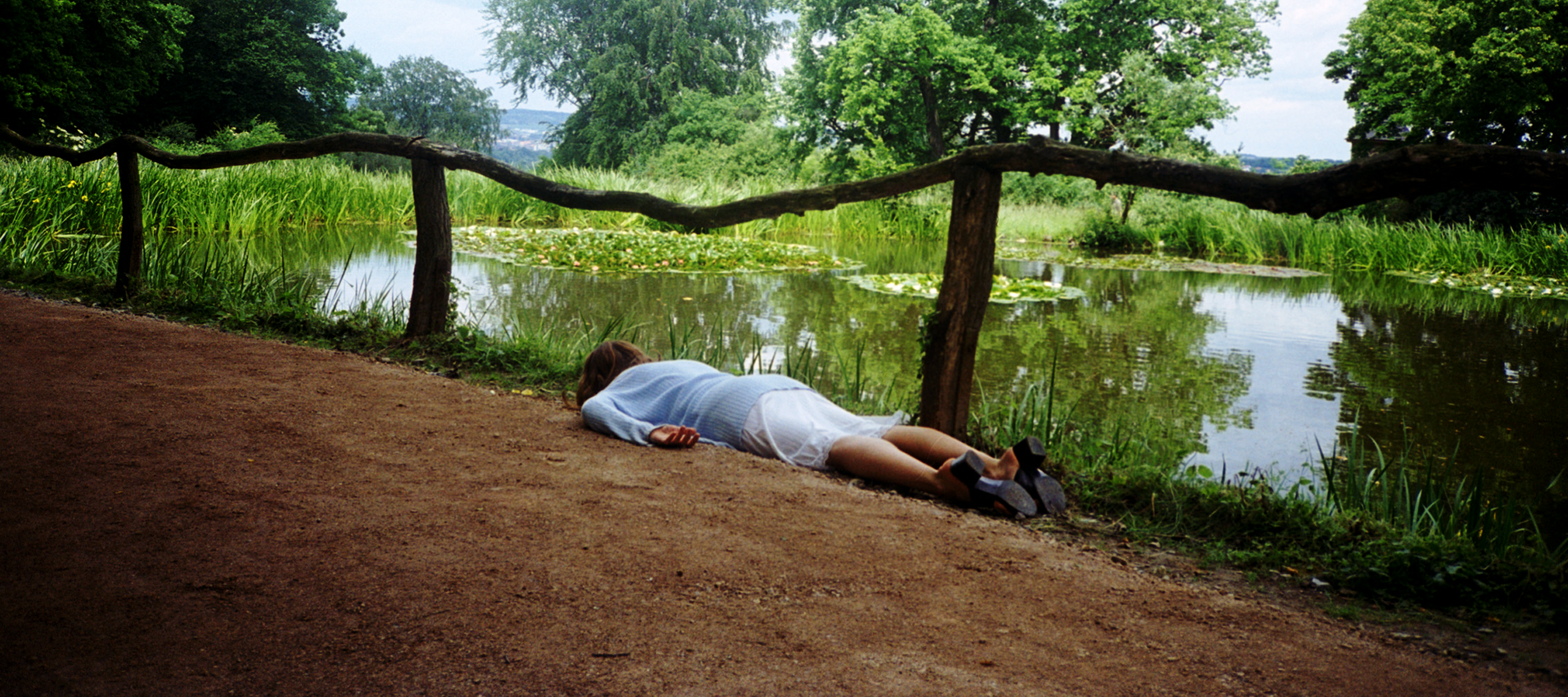Live Dangerously exhibits all one hundred photographs in Janaina Tschäpe’s 100 Little Deaths together for the first time. Tschäpe began the project in 1996 as an exploration of landscape, transmutation, and death. Each self-portrait depicts the artist sprawled face down in different environments around the world, often with limbs akimbo. Tschäpe’s body decorates a range of landscapes including urban meccas, ancient ruins, manmade interiors, woodlands, and bodies of water.
At face value, the series functions as the artist’s visual travel diary from 1996–2002. Tschäpe felt that each place she visited captured pieces of her, and she wanted to embody that emotion in her photography. Her prostrate form represents the powerful feeling of leaving a part of yourself behind somewhere. “It was the idea of me dying, or living a little history that was very short in every place,” Tschäpe said. Her photos vacillate between comedy and tragedy, making the series both surreal and theatrical.

Changing Landscapes
Tschäpe’s horizontal body becomes a part of the landscape as each location molds and changes her. Each photo is “…related to either new places I was living, or new places I was going to…I was really a landscape,” the artist has said. In Moais (2002), the towering Moai statues dwarf Tschäpe’s body. The neutral tones of her clothing blend into the rock and shadows; only the bright white of her shirt draws the eye to her presence. Tschäpe merges into the scene and loses herself to the massive statues before her in one of the most remote places in the world.

The transformation is reciprocal. Tschäpe constructs and changes the landscapes with her presence, just as these places change her. Frick Park (2000) presents the artist lying in fallen leaves on a wooded path. She has cleared away the fallen leaves next to her in the shape of her body. This outline doubles her presence and emphasizes her effect on the landscape. The leaves will never occupy that exact space again. Tschäpe forever alters the location, if only slightly, by being there.
Ocean Goddess
Many of Tschäpe’s “little deaths” take place in or near water, which may be a way for the artist to pay homage to her name and its connection to water. Tschäpe’s first name, Janaina, is derived from the name of an Afro-Brazilian sea goddess of the Candomblé religion. In Fiji (2002), Tschäpe lays perpendicular to the shoreline of a rocky beach. Her blue pants echo the blue of the water. The still line of her body directs the viewer’s eye to the ocean and the distant mountains that appear on the horizon.

Tschäpe’s “little deaths” represent the transmutation that occurs during her travels. Her prone figure negates her identity. This allows the artist to become a part of the landscape and represents the death of her old identity. The figure is not Tschäpe; it is her old self, left behind. Her new self continues on to her next location and next little death.
